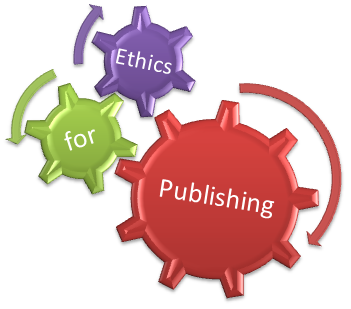Analytical and Experimental Investigation on Cutting Temperature in Turning AISI 304 Austenitic Stainless Steel Using AlTiCrN Coated Carbide Insert
(*) Corresponding author
DOI's assignment:
the author of the article can submit here a request for assignment of a DOI number to this resource!
Cost of the service: euros 10,00 (for a DOI)
Abstract
This study presents analytical and experimental results of cutting force and chip-tool interface temperature developed during turning of AISI 304 austenitic stainless steels using nano-crystalline AlTiCrN coated cemented carbide insert. The work-tool thermocouple calibration set-up based on the novel concept was developed. Inconel air heater of 1 KW capacity was used as a heating element at the work-tool junction for heating the junction steadily up to 1000 °C. The turning tests were conducted at cutting speeds in the range of 140 to 320 m/min, feed in the range of 0.08 to 0.26 mm/rev keeping depth of cut constant at 1 mm. The influence of cutting parameters and tool coating were investigated on the average chip-tool interface temperature and cutting force. A regression model for chip-tool interface temperature was developed considering the effect of cutting parameters. In addition, the experimental results were validated using the 'Boothroyd temperature model'. Experimentally an interface temperature of 979°C was observed whereas the model predicted 988°C temperature at 260 m/min cutting speed and 0.14 mm/rev feed. The interface temperature in turning is strongly dependent on the cutting speed followed by feed. The AlTiCrN coated shows excellent thermal stability due to the formation of stable Cr2O3 or and dense α(Al,Cr)2O3 mixed oxide scales. The developed interface model shows excellent fit and could be used effectively for predicting the interface temperature for the given tool and work material and cutting conditions.
Copyright © 2013 Praise Worthy Prize - All rights reserved.
Keywords
References
P.S. Sreejith, B.K.A. Ngoi, Dry Machining: Machining of the Future, Journal of .Material Processing Technology, Vol. 101, pp. 287–291, 2000.
Yahya Dogu, Ersan Aslan, Necip Camuscu, A Numerical Model to determine Temperature Distribution in Orthogonal Metal Cutting, Journal of Materials Processing Technology, Vol. 171, pp. 1–9, 2006.
N.A. Abukhshim, P.T. Mativenga, M.A. Sheikh, Heat Generation and Temperature Prediction in Metal Cutting: A Review and Implications for High Speed Machining, International Journal of Machine Tools & Manufacture, Vol. 46, pp. 782–800, 2006.
K.J. Trigger, B.T. Chao, An Analytical Evaluation of Metal Cutting Temperatures, Transactions of ASME, Vol. 73, pp. 57–68, 1951.
E.G. Loewen, M.C. Shaw, On the Analysis of Cutting-Tool Temperatures, Transactions of ASME, Journal of Engineering for Industry, Vol.76, pp. 217–231, 1954.
J.H. Weiner, Shear Plane Temperature Distribution in Orthogonal Cutting, Transactions of ASME, Vol. 77, pp. 1331–1341, 1955.
G. Boothroyd, Fundamentals of Metal Machining and Machine Tools, (2nd edition, Scripta,1975).
P.K. Wright, S.P. McCormick, T.R. Miller, Effect of Rake Face Design on Cutting Tool Temperature Distribution, Journal of Engineering for Industry, Vol.102, pp. 123–128, 1980.
R. Radulescu, S.G. Kapoor, An Analytical Model for Prediction of Tool Temperature Fields during Continuous and Interrupted Cutting, Transactions of ASME, Journal of Engineering for Industry, Vol. 116, pp. 135–140, 1994.
Trigger, K.J. Progress report No.1, on chip-tool interface temperature, Transactions of ASME, Vol. 70, pp. 91-98, 1948.
W. Grzesik, Experimental Investigation of the Cutting Temperature when Turning with Coated Indexable Inserts , International Journal of Machine Tools and Manufacture, Vol. 39, pp. 355-369, 1999.
Ihsan Korkut, Mehmet Boy, Ismail Karacan, Ulvi Seker, Investigation of Chip-Back Temperature during Machining Depending on Cutting Parameters, Materials and Design, Vol. 28, pp. 2329–2335, 2007.
Atul P. Kulkarni, Vikas G. Saargade, Investigation into the Machinability Characteristics of AISI 304 Austenitic Stainless Steels using Multilayer TiN/TiAlN Coated Cemented Carbide Inserts, Proc. 3rd Int. Conf. Rec. Adv. Mater. Process. Technol. (RAMPT’13), Kovilpatti, 2013, pp. 1-6.
S. K. Choudhary, G. Bartarya, Role of Temperature and Surface Finish in Predicting Tool Wear using Neural Network and Design Of Experiments, International Journal of Machine Tools and Manufacture, Vol.43, pp.747-753, 2003.
L. B. Abhang, M. Hameedullah, Chip-Tool Interface Temperature Prediction Model for Turning Process, International Journal of Engineering Science and Technology, Vol. 2, n.4, pp. 382-393, 2010.
R. M. Saoubi, H. Chandrasekaran, Investigation of The Effects of Tool Micro-Geometry and Coating on Tool Temperature during Orthogonal Turning of Quenched and Tempered Steel, International Journal of Machine Tools & Manufacture, Vol. 44, pp. 213–224, 2004.
W. Grzesik, P. Nieslony, A Computational Approach to Evaluate Temperature and Heat Partition in Machining with Multilayer Coated Tools, International Journal of Machine Tools & Manufacture, Vol. 43, pp.1311–1317, 2003.
R.F. Bunshah, Handbook of Hard Coatings, (1st edition, Noyes, 2001).
V.G. Sargade, S. Gangopadhyay, S. Paul, A.K. Chattopadhyay, Effect of Coating Thickness and Dry Performance of TiN Film Deposited on Cemented Carbide Inserts using CFUBMS, Materials and Manufacturing Process, Vol 26, pp-1-6, 2011.
V.G. Sargade, S. Gangopadhyay, M.H. Hasurkar, S. Paul, A.K. Chattopadhyay, Deposition, Characterization and Performance Evaluation of TiN coated HSS and Cemented Carbide Cutting Tools using Closed-Field Unbalanced Magnetron Sputtering, Proc. 2nd Int. and 23rd AIMTDR conf., Chennai, 2008, pp. 329-334.
B. Tlili, M. Nasri, F. Ayari, C. Nouveau ,Fretting Wear Performance of Multilayered PVD TiAlZrN/TiAlN/TiAl on AISI 4140 Steel, (2008) International Review of Mechanical Engineering (IREME), 2 (2), pp. 255-260.
M.Y. Noordin, V.C. Venkatesh and S. Sharif, Dry turning of tempered martensitic stainless tool steel using coated cermet and coated carbide tools, Journal of .Material Processing Technology, Vol. 185, pp. 83–90, 2007.
Reddy, S., Mukunda, P.G., Suresh Hebbar, H., Wear and machinability study of SiCp reinforced and Al2O3p reinforced Al-Si alloy composites, (2010) International Review of Mechanical Engineering (IREME), 4 (1), pp. 28-34.
B. Warcholinski, A. Gilewicz, Mechanical properties of multilayer TiAlN/CrN coatings deposited by cathodic arc evaporation, Surface Engineering, Vol. 27, n.7, pp. 491-497, 2011.
Fox-Rabinovich GS, Yamomoto K, Veldhuis SC, Kovalev AI, Dosbaeva GK, Tribological adaptability of TiAlCrN PVD coatings under high performance dry machining conditions, Surface and Coating Technology, Vol. 200, n.5–6, pp. 1804–13, 2005.
S. Huddedar, A. P. Kulkarni, G. Joshi,Vikas Sargade, Microstructure and Mechanical Properties of AlTiCrN, AlCrN Coatings Deposited by Cathodic Arc Evaporation (PVD) Technique, Proc. 21st Int. Conf. Process.Fab. Adv, Mater., Guwahati, Vol. 1., 2012, pp. 514-520.
Korkut, I., Kasap, M., Ciftci, I. and Seker, Determinaton of optimum cuttingparameters during machining of AISI 304 austenitic stainless steel, Materials and Design, Vol. 25, pp. 303-305, 2005.
Ibrahim Ciftci, Machining of austenitic Stainless steels using CVD multi-layer coated cemented carbide tools, Tribology International, Vol 39, n. 6, pp. 565-569, 2006.
R. A. Mahdavinejad and S Saeedy, Investigation of the influential parameters of machining of AISI 304 stainless steel, Sadhana, Vol. 36, n. 6, pp. 963–970. 2011.
Ihsan Korkut, Mehmet Boy, Ismail Karacan, Ulvi Seke, Investigation of chip-back temperature during machining depending on cutting parameters. Materials and Design, Vol. 28, pp.2329– 2335,2007.
Trent EM., Metal cutting. (2nd edition, Butterworths Press ,London,1989).
Srinivasan, S., Sathyanarayan, R., Srivatsan, L., Vijaya Ramnath, B., Optimization of tool life using linear regression analysis, (2012) International Review of Mechanical Engineering (IREME), 6 (3), pp. 405-410.
A. Arun Premnath, T. Alwarsamy, T. Rajmohan Experimental Investigation on Hardness, Cutting Force and Roughness in Milling of Hybrid Composites, (2012) International Review of Mechanical Engineering (IREME), 6 (1), pp. 44-49.
Refbacks
- There are currently no refbacks.
Please send any question about this web site to info@praiseworthyprize.com
Copyright © 2005-2024 Praise Worthy Prize








